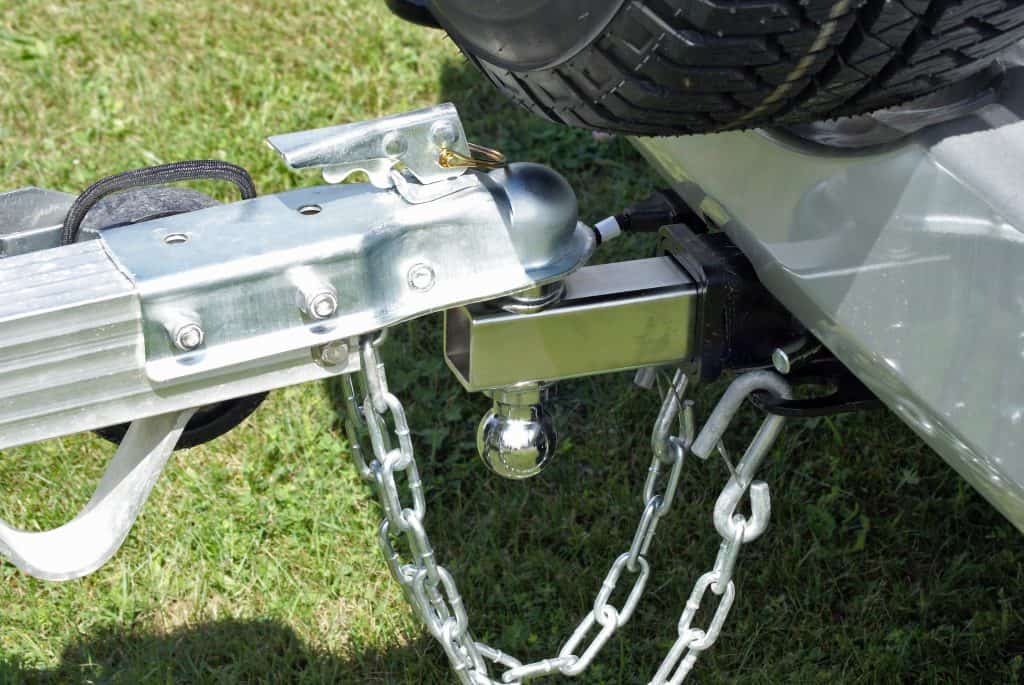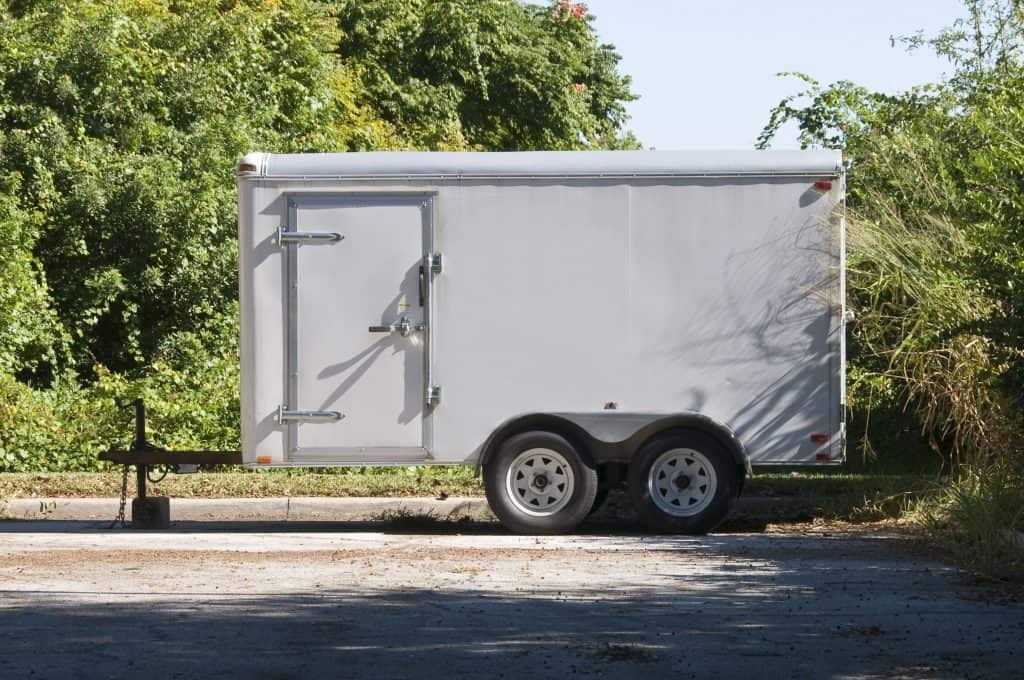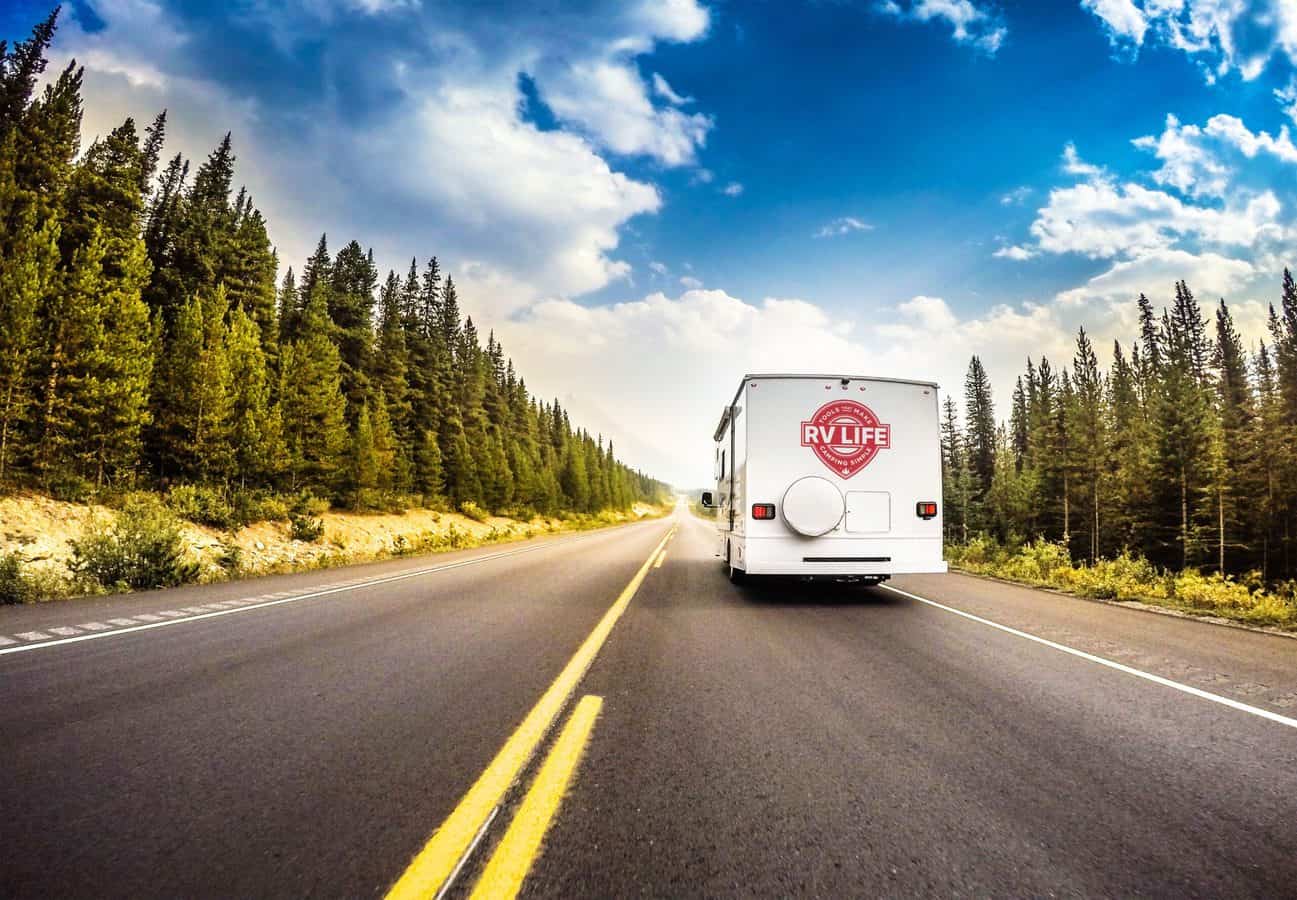
Traveling in a motorhome adds both comfort and convenience to any trip you and your family leave on. However, if you are looking to bring along a trailer, finding a way to transport it may seem difficult with your motorhome.
Most motorhomes are capable of towing trailers behind them. However, your motorhome most likely will need to be at least a Class B+ in order to pull anything “heavy duty.” Depending on the class of motorhome, the type of engine, and the driving conditions, your motorhome may be able to tow up to 20,000 pounds.
Next time you travel anywhere in your motorhome, bring the golf cart or another all-terrain vehicle along too! However, there are some safety and logistics factors that you should understand prior to hooking up the trailer, pulling out the wheel chocks, and setting off on an adventure. Continue reading to find out everything you need to know about towing trailers with a motorhome!
Motorhome Towing Capabilities
As mentioned above, only certain classes of motorhomes are capable of pulling trailers. To make things even more complicated, not every motorhome is able to tow the same amount of weight.
So what is a motorhome even capable of towing? Some of the most common items seen being pulled behind a motorhome are horse trailers, boats, cars, small carts, and trailers!
While most motorhomes will come already equipped with everything needed in order for you to tow a trailer, some models will require you to install a special tow package.
When you are purchasing your next motorhome, ask the dealer what towing capabilities the unit has and if possible ask how much a towing package installation costs. While it may cost a little more from the dealer rather but you will know it has been installed correctly and professionally.
Each class of motorhome can be seen commonly seen towing similar items behind them. For example, due to the larger size of a Class A motorhome, travelers tend to tow a smaller separate vehicle behind them. This smaller vehicle can be used for traveling to sights and restaurants without needing to pack up the entire motorhome.
Another item commonly seen behind a Class A Motorhome is a golf cart carrier trailer. This works well for anyone who is staying in a larger RV park and needs a quicker way to visit the showers or for anyone who is touring the country looking for the best stretch of the fairway!
When towing anything behind your Class A motorhome be sure to check for any length restrictions in the area. For example, if you are driving a 50 foot long motorhome and wish to tow a 15 foot boat (assuming it fits within your vehicle’s maximum towing capabilities), you will need to ensure that any campground, national park, or any other destination you plan on visiting does not have a length restriction below 65 feet.
Class C motorhomes are commonly seen in towing boats or smaller cars. Once again these cars simply make it easier to tour the area around your campsite without repacking the motorhome every time you wish to do so. Many other motorhomes will carry one or two small all-terrain vehicles behind their Class C motorhome with the assistance of a longer trailer.
Class B motorhomes are the smallest class of motorhome and therefore are not capable of towing much more than a few thousand pounds (if that even). In some cases, Class B motorhome owners may tow a small camper trailer behind the vehicle.
This is typically done to add some extra sleeping space (Class B motorhomes usually only sleep 2 – 3 people). In this case, the Class B motorhome will be used as a “touring vehicle” while the camper is the actual living space. These camper trailers will not be much bigger than a pop-up trailer or a tear drop trailer.
Now we know what is most commonly towed behind each class of motorhome, let’s find out exactly how much your motorhome is capable of towing.
Calculating What Your Motorhome Can Tow
In order to calculate how much your motorhome is capable of towing, there are a few numbers and terms you should be looking for. No need to worry, each of these numbers can usually be found in the owner’s manual or written somewhere on the motorhome!
The first thing you should know is the motorhome’s Maximum Towing Capacity. To find this number look in one of these three places: the owner’s manual to your motorhome, on tire pressure plate usually near the driver’s door, or on the motorhome manufacturer’s website. If you still can’t find this number, follow my instruction below to calculate it for yourself!
In order to calculate the Maximum Towing Capacity of your motorhome, you are going to need to know both the Gross Combined Weight Rating and the Gross Vehicle Weight Rating.
The first number, the Gross Combined Weight Rating (GCWR) is the total amount of weight that the motorhome cannot exceed. This number includes the weight of the motorhome, all passengers, the trailer being towed, any cargo (blankets, clothes, food, etc.), and the combined weight of all the vehicle’s tanks.
The next number you will need is the Gross Vehicle Weight Rating (GVWR) is the maximum amount of weight that the vehicle alone is able to carry. While the weight of the trailer and cargo does not factor into this number, the tongue weight of the trailer does.
To find the Maximum Towing Capability (the maximum possible weight of the trailer you will be towing can be) that we were originally searching for, you simply subtract the GVWR from the GCWR.
If you are looking for more information regarding the GVWR and GCWR, visit Lichtsinn RV on their website to learn more!
Now that you know the maximum possible weight that your trailer can be, there are a few more numbers that may factor into your motorhome’s towing capability.
Possibly one of the most important numbers to know is your motorhome’s Hitch Towing Capacity. This number will most likely be smaller than the Maximum Towing Capacity of your motorhome. Always be sure to know both the Maximum Towing Capacity and the Hitch Towing Capacity before you hit the road on your next adventure.
Why? Well, if the Hitch Towing Capacity is less than the Maximum Towing Capacity of the motorhome, then you will need to follow the lower weight restriction or install a new towing package capable of carrying the larger weight. This same principle applies vice versa to the Hitch Towing Capacity.
In the unlikely event that your Hitch Towing Capacity allows for more weight than the Maximum Towing Capacity, follow the weight allotted for the Maximum Towing Capacity. In either case, always stick to the lower number!
The next question you may be asking is if your cargo and trailer combination exceeds the GCWR. In order to check this GVWR, load up your motorhome and take it to the nearest weighing scale. After doing so you will know how much weight you have left for towing your trailer.
If you do not have access to a weighing scale, then there is some simple math you are able to in order to keep your motorhome under the given weight restrictions.
For this example, we will be doing the math for the Class A 2020 Thor Freedom Trailer A27 that is fully loaded.
Gross Vehicle Weight Rating (GVWR): 16,000 pounds
Gross Combined Weight Rating (GCWR): 23,000 pounds
Trailer Hitch Rating: 8,000 pounds
With these two numbers, we are able to calculate that the Maximum Towing Capacity of the Thor Freedom Trailer is 7,000 pounds and that 1,000 pounds of the Trailer Hitch Rating are not applicable to this situation.
If the Unloaded Vehicle Weight (UVW) is 12,900 pounds, we know we have 3,100 pounds for cargo, passengers, and tanks.
Let’s also assume that we are bringing 4 passengers along whose combined weight total 500 pounds. The only other numbers we need to calculate the weight of our motorhome is the weight of the tanks is the weight of full water tank (417 pounds), refrigerator (100 pounds), propane (10 pounds), and any extra cargo that will be coming along (300 pounds).
Adding all of these numbers (the UVW, combined passenger weight, fridge, propane, the Maximum Towing Capacity, and any extra cargo), we see that our trailer currently weighs 21,227 pounds and we are below the Gross Combined Weight Rating. This means we are capable of hitting the road on our next adventure!
Need another example of calculating the weight of a motorhome and trailer? Check out The Fit RV for more information and another example!
Trailers for Motorhomes

Now that you know how to find out how much your motorhome is capable of towing, let’s find out what there is available for you to tow!
While you are able to pull almost any kind of trailer behind your motorhome, some companies have started producing trailers that are specifically built for being pulled by motorhomes!
Open Trailers or Carriers
One of such companies is goes by the name of Freedom Hauler.
Once known as the Idaho Tote, the Freedom Hauler Company now focuses on building and selling trailers that work as an extension of your motorhome. What exactly does this mean?
Well, each Freedom Hauler Trailer is designed not only to add zero extra weight to your motorhome but comes with a one of a kind “self-steering system.”
This self-steering system solves the problem that arises when you attempt to back your motorhome and trailer into a spot. While jack knifing may not be a concern for too many of you avid motorhome drivers, it is a problem that may keep others from even trying to tow a trailer behind their motorhome.
However, as I said before, the Freedom Hauler trailer eliminates this problem completely! Don’t believe me? Watch this video originally made by Idaho Tote to see for yourself!
Not only are Freedom Hauler trailer equipped with this wonderful steering mechanism, but they are also able to be customized to meet your transporting needs!
Click here to start designing your own Freedom Hauler trailer!
Looking for something a little different than this trailer? Read this article on 6 Excellent Golf Cart Carrier Solutions for Motorhome Owners to find the perfect trailer for you and your travels!
Small Travel Trailers
Class B motorhomes are occasionally seen towing a small travel trailer behind them in order to extend the amount of living and sleeping space available.
If you are taking your Class B motorhome out and need a little extra help finding the perfect extended living space, you are in luck! I have gathered for you my favorite travel trailers under 3,000 pounds!
Be sure to calculate your motorhome’s Maximum Towing Capacity correctly and to factor in the weight of not only the trailer but any extra cargo and tanks as well before hitting the road.
1. 2019 Forest River No Boundaries 19.5 ($23,995)
| Features | Specs |
|---|---|
| Unloaded Vehicle Weight | 3,456 pounds |
| Length | 22 feet 8 inches |
| Slide-Outs | 1 |
| Sleeps | 3 |
Content courtesy of CAMPING WORLD.
If your Class B motorhome is only able to sleep two and the kitchen/dining area just simply isn’t enough for an extended trip, then this travel trailer is the perfect match!
The Forest River No Boundaries features a queen size bed, a full double dinette, and a separate toilet and shower (something not seen in most Class B motorhomes).
Need a little extra room to cook a meal? Maximize your available cooking space by using both the kitchen and counter space in the motorhome and in the trailer!
Whether you use this space as the main living area, or as a guest room for the in-laws, you and your family are sure to love this motorhome combination!
2. 2020 Airstream Base Camp ($37,400)
| Features | Specs |
|---|---|
| Unloaded Vehicle Weight | 2,585 pounds |
| Length | 16 feet 3 inches |
| Slide-Outs | – |
| Sleeps | 2 |
Content courtesy of Airstream.com.
If your motorhome is only capable of towing less than 4,000 pounds then the 2020 Airstream Base Camp might be the perfect match for you!
Airstream is well known for manufacturing aluminum travel trailers that are both durable and comfortable. The inside of this truly petite travel trailer has been designed to make you feel as though you are staying first class in less than one hundred square feet!
While this travel trailer will not add much extra room to a Class B motorhome, it does create a separate bedroom, bathroom, and kitchen from the motorhome for either a guest or for you and your spouse to escape the children for a little bit.
3. 2009 Fleetwood Niagara 4333 ($8,995)
| Features | Specs |
|---|---|
| Unloaded Vehicle Weight | 3,275 pounds |
| Length | 27 feet |
| Slide-Outs | – |
| Sleeps | 6 |
Content courtesy of RVTrader.
The Fleetwood Niagara 4333 is a pop-up trailer that is able to add more sleeping space than you could ever possibly need on a camping trip!
This model adds a full kitchen (microwave, oven, three burner stove, and double basin sink), a small bathroom area, a full double dinette, a lounge area, and TWO queen size beds!
If you are looking for the perfect amount of living space without all of the added weight, then the Fleetwood Niagara 4333 will be the perfect trailer to take with you on your next adventure!
In case you are hoping to travel into one the National Parks for your next adventure, it is important to know that some of the National Parks do not allow pop-up “tent” campers to be used there. Be sure to check the regulations for the area you are going to be staying in before you hit the road.




